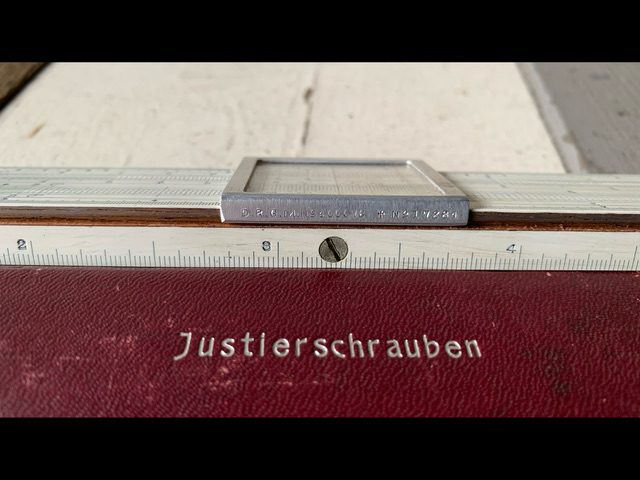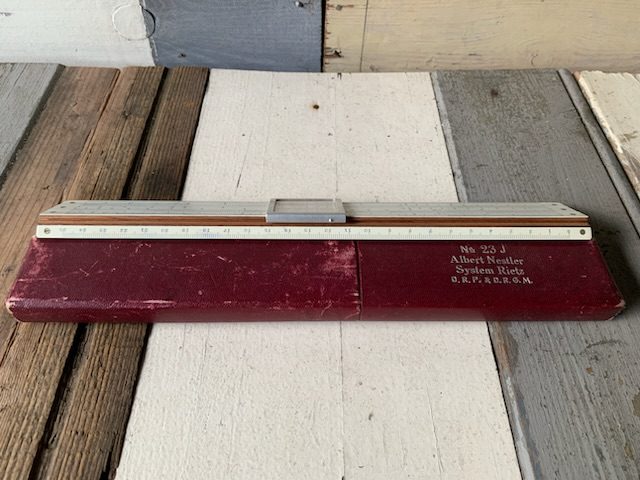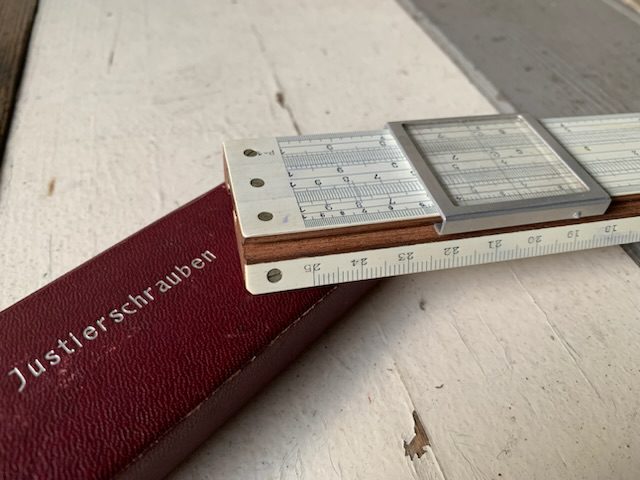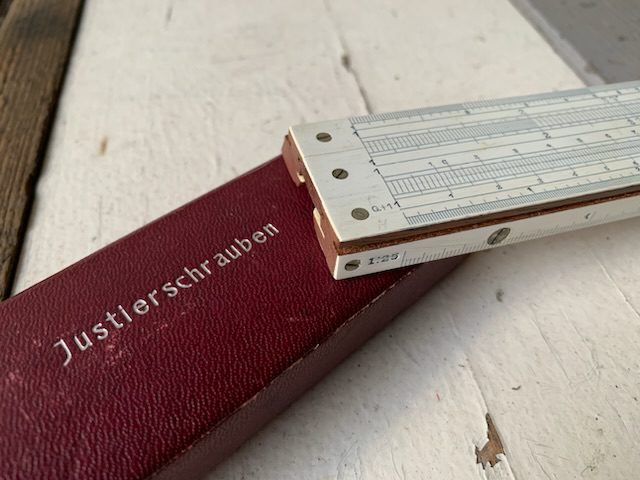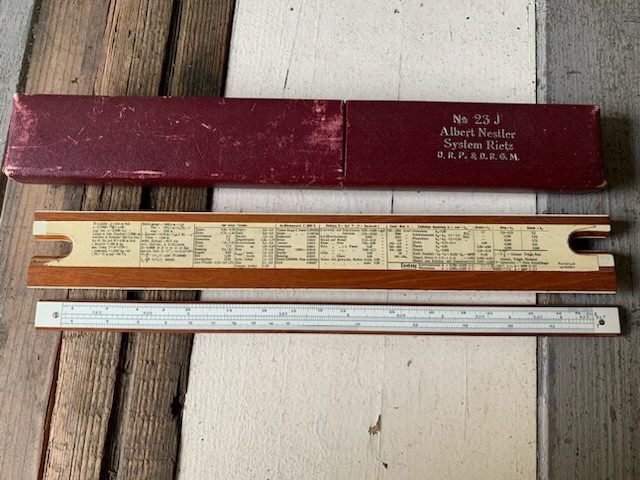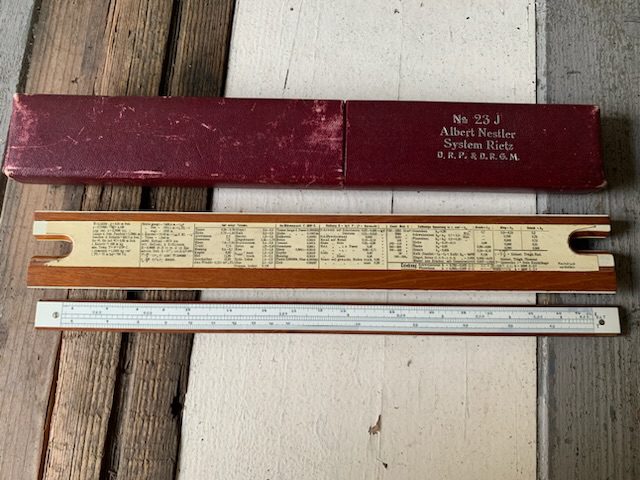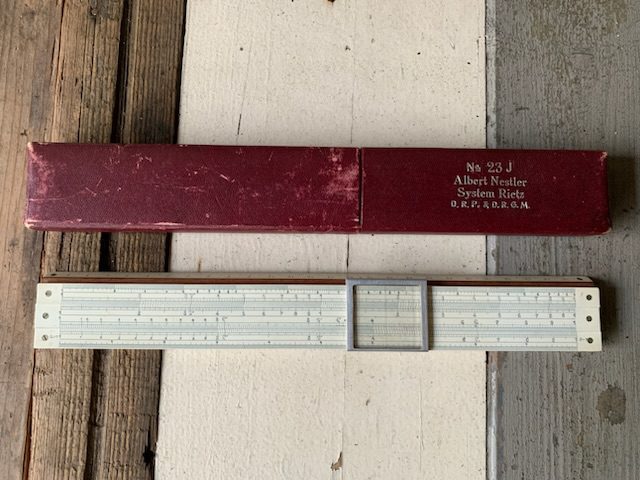This highly unusual slide rule version of 23 Rietz model designated 23J. It seems only very few of these were produced. It addresses the problem of the wood slide rule warping over time, due to use and environment conditions. This particular version has 3 additional adjustment screws, 15 in total. Where the “normal” versions form that period only have 10 or 12 (difference between 10 or 12 is that if the slide is screwed on 1 or on both sides) to keep the celluloid laminating material in place (according to patent D.R.G.M. 164885 from 1901). The 3 screws from bottom to top through the entire stock of the rule makes this an interesting version. These 3 screws make sure that the slider will always be firm in the stock. This is actually a patent by Dennert & Pape (D.R.G.M. 192052) that was issued in 1903. In 1924 Nestler receives patent D.R.G.M. 410565 for round springs in the back of the stock which voids the need of adjustments screws (in German “Justierschrauben”)…which does not gets marketed until their 1938 catalog. See below.
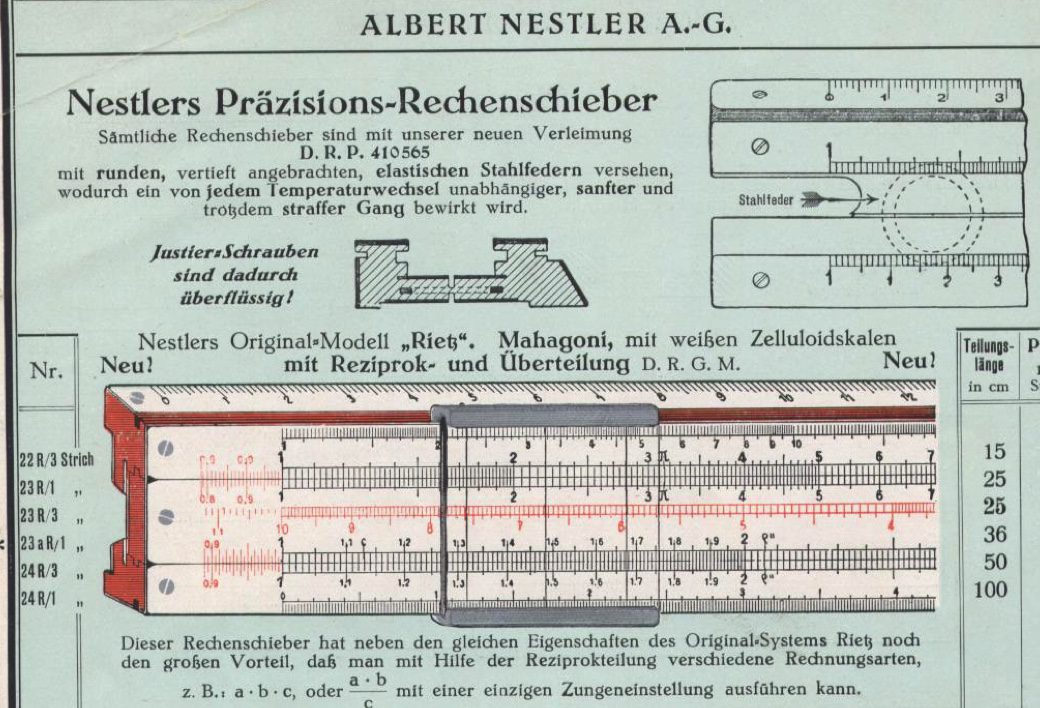 Also the above page shows that there is no longer a model 23 sold. It is now the model 23R (with red Reciprocal scale added). After some digging it seems Nestler was using basic slide rule stocks produced by Denner & Pape in the early 1900’s as a base for their own rules. So this particular model 23J is a Dennert & Pape based Nestler rule with a specific number “J” for the D&P invention (without referring to the DRGM number) so probably from somewhere around 1910-1920. Around this period the Nestler produced more of their own rules. Perhaps some disagreement has lead to limiting the use of the 23J model?
Also the above page shows that there is no longer a model 23 sold. It is now the model 23R (with red Reciprocal scale added). After some digging it seems Nestler was using basic slide rule stocks produced by Denner & Pape in the early 1900’s as a base for their own rules. So this particular model 23J is a Dennert & Pape based Nestler rule with a specific number “J” for the D&P invention (without referring to the DRGM number) so probably from somewhere around 1910-1920. Around this period the Nestler produced more of their own rules. Perhaps some disagreement has lead to limiting the use of the 23J model?
This rule is great condition, no cracks or chips and an early glass slider with 3 hairlines and also 2 patent numbers on it D.R.G.M. 400076 (patent from 1909) and the Swiss patent 17284. It measures 27,5 cm or 11 inches in length. The cardboard case is complete and in great shape as well. There is another very interesting Nestler model here: Nestler 23E special type!


